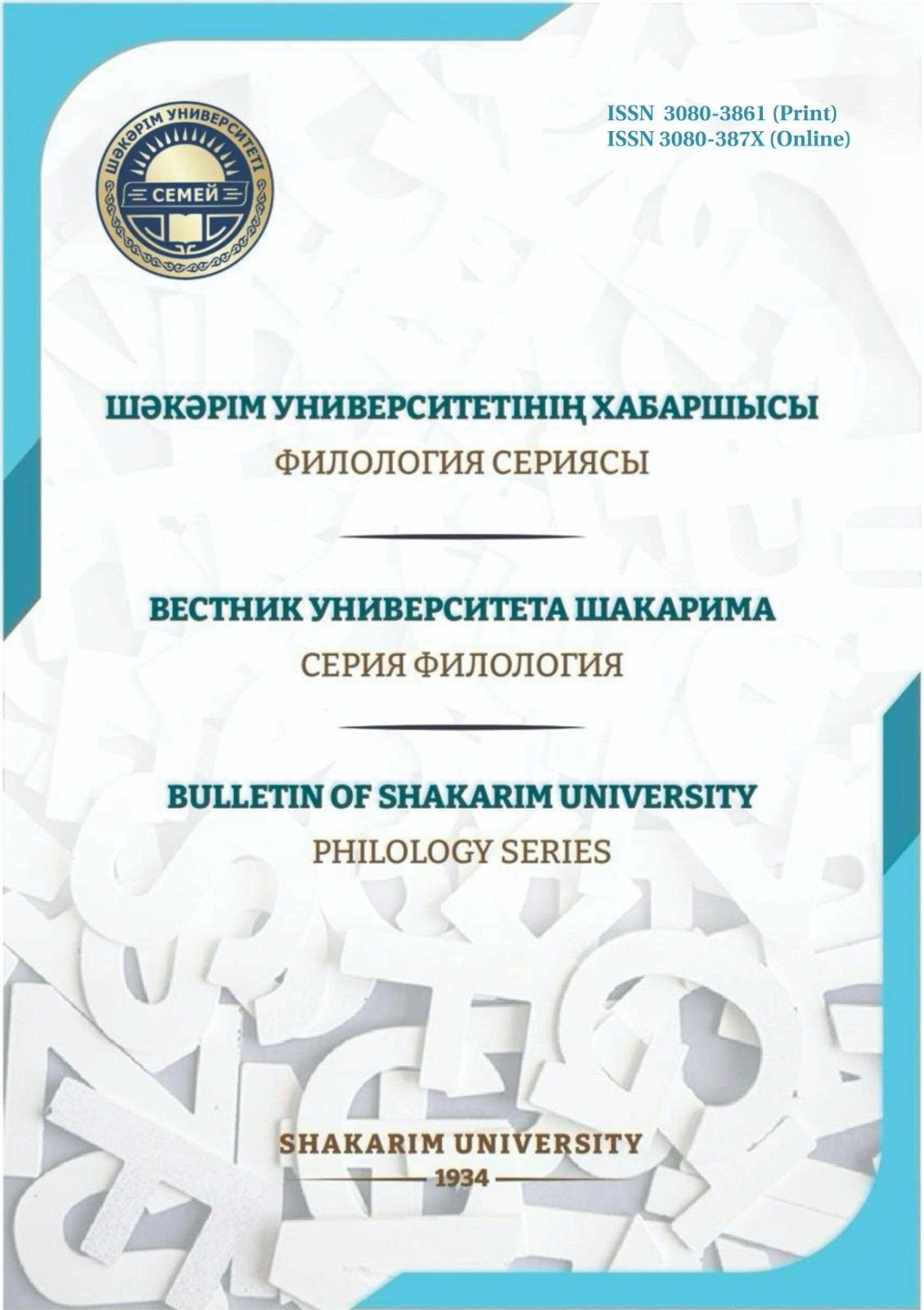NATIONAL AND CULTURAL FEATURES OF PHRASEOLOGICAL UNITS IN THE KAZAKH AND ENGLISH LANGUAGES
Keywords:
lingoculturology, phraseology, national and cultural features, natural culture, customs and traditionsAbstract
The article comprehensively examines the national and cultural features of phraseological units in the Kazakh and English languages, which belong to different language groups, within the framework of linguistic cultural studies.
The article analyzes phraseological units in the compared languages, particularly based on the historical, social, and cognitive practices of the Kazakh and English peoples in different periods, to identify the relationship between language and culture. The article describes the methods of formation of set expressions in the two languages, the stages of their development in the language, and carries out a linguistic and cultural analysis, classifying them into semantic and thematic groups.
Since time immemorial, every nation's language has been rich in various nuances and has developed a great number of set expressions that have become widely used. These expressions, including proverbs, sayings, and idioms, are the cornerstone of each nation's cultural heritage, reflecting its unique customs, traditions, and mindset.
This article emphasizes that the semantic basis of stable expressions in the language is fully reflected in the traditions, customs, and worldview of the people. Taking into account these factors, the article describes the national and cultural features of the phraseological units in the Kazakh and English languages and examines their similarities and differences.
It is important to study the phraseological units of a language within the framework of linguistic cultural studies using the comparative method. Because it is not enough to know the nature of the national language, which combines concepts such as national culture, national being and national language, only on the basis of its own internal laws of language. In this regard, the study and cognition of the subtle nature of stable expressions in language becomes possible as a result of the close interaction of linguistics with other fields of science (anthropology, psychology, mythology, ethnography, cultural cognition, etc.).
The goal of modern linguistic science is to improve modern methods and techniques of comprehensive and systematic research in order to determine the specific national and cultural features of each language.
In the process of working on the article, the following types of methods were used: descriptive (synchronous) method, comparative-contrastive method, linguistic-cultural and historical-etymological analysis, methods of selection and systematization of factual material.
Downloads
Published
Issue
Section
License
Copyright (c) 2025 The editorial staff of the journal follows the copyright law of the Republic of Kazakhstan and relevant international agreements. The authors retain their copyright and provide the journal «Bulletin of Shakarim University. Series of Historical Sciences» right of first publication of the manuscript. The author has the right to copy and distribute the material in any medium and in any format, subject to appropriate reference to the journal. Readers and users can freely copy, distribute and adapt the material, provided that the author of the work is indicated and a link to this journal is provided. Copyright presupposes the integrity and responsibility of each co-author who made a significant contribution to the writing of the article. The author has the right to store his publications in an institutional or other repository of his choice, provided he provides the appropriate link to the journal’s website.

This work is licensed under a Creative Commons Attribution-NonCommercial 4.0 International License.
Copyright presupposes the integrity and responsibility of each co-author who made a significant contribution to the writing of the article.
The author has the right to store his publications in an institutional or other repository of his choice, provided he provides the appropriate link to the journal’s website.

